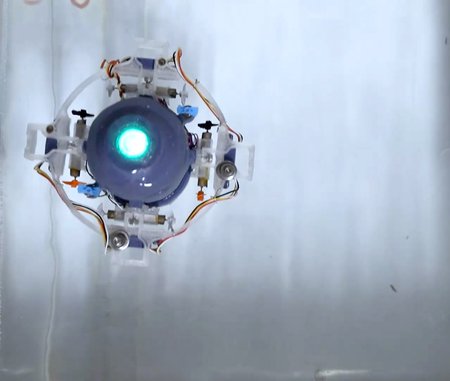2025-05-12 カリフォルニア大学サンタバーバラ校 (UCSB)

Photo Credit Courtesy image
(a) An image of an AlGaAs-on-insulator (AlGaAsOI) chip with 14 sets of microring array devices with fiber input and output coupled to one array. (b) A micrograph of the device, showing an array of 20 microresonators coupled to a single bus waveguide.
<関連情報>
- https://news.ucsb.edu/2025/021874/quantum-entangled-photons-demand
- https://journals.aps.org/prxquantum/abstract/10.1103/PRXQuantum.6.010338
- https://journals.aps.org/prxquantum/abstract/10.1103/PRXQuantum.2.010337
AlGaAsマイクロ共振器アレイを用いた高速エンタングルメント生成のための汎用チップスケールプラットフォーム Versatile Chip-Scale Platform for High-Rate Entanglement Generation Using an AlGaAs Microresonator Array
Yiming Pang, Joshua E. Castro, Trevor J. Steiner, Liao Duan, Noemi Tagliavacche, Massimo Borghi, Lillian Thiel, Nicholas Lewis, John E. Bowers, et al.
PRX Quantum Published 3 March, 2025
DOI: https://doi.org/10.1103/PRXQuantum.6.010338
Abstract
Integrated photonic microresonators have become an essential resource for generating photonic qubits for quantum information processing, entanglement distribution and networking, and quantum communications. The pair-generation rate is enhanced by reducing the microresonator radius, but this comes at the cost of increasing the frequency-mode spacing and reducing the quantum information spectral density. Here, we circumvent this rate-density trade-off in an AlGaAs-on-insulator photonic device by multiplexing an array of 20 small-radius microresonators, each producing a 650-GHz-spaced comb of time-energy entangled-photon pairs. The resonators can be independently tuned via integrated thermo-optic heaters, enabling control of the mode spacing from degeneracy up to a full free spectral range. We demonstrate simultaneous pumping of five resonators with up to 50-GHz relative comb offsets, where each resonator produces pairs exhibiting time-energy entanglement visibilities up to 95%, coincidence-to-accidental ratios exceeding 5000, and an on-chip pair rate up to 2.6 GHz/mW2 per comb line—an improvement over prior work by more than a factor of 40. As a demonstration, we generate frequency-bin qubits in a maximally entangled two-qubit Bell state with fidelity exceeding 87% (90% with background correction) and detected frequency-bin entanglement rates up to 7 kHz (an approximately 70 MHz on-chip pair rate) using a pump power of approximately 250 μW. Multiplexing small-radius microresonators combines the key capabilities required for programmable and dense photonic qubit encoding while retaining high pair-generation rates, heralded single-photon purity, and entanglement fidelity.
AlGaAs-On-Insulatorマイクロ共振器からの超高輝度エンタングルフォトンペア生成 Ultrabright Entangled-Photon-Pair Generation from an AlGaAs-On-Insulator Microring Resonator
Trevor J. Steiner, Joshua E. Castro, Lin Chang, Quynh Dang, Weiqiang Xie, Justin Norman, John E. Bowers, and Galan Moody
PRX Quantum Published: 4 March, 2021
DOI: https://doi.org/10.1103/PRXQuantum.2.010337
Abstract
Entangled-photon pairs are an essential resource for quantum-information technologies. Chip-scale sources of entangled pairs have been integrated with various photonic platforms, including silicon, nitrides, indium phosphide, and lithium niobate, but each has fundamental limitations that restrict the photon-pair brightness and quality, including weak optical nonlinearity or high waveguide loss. Here, we demonstrate a novel ultralow-loss AlGaAs-on-insulator platform capable of generating time-energy entangled photons in a >1 million microring resonator with nearly 1000-fold improvement in brightness compared to existing sources. The waveguide-integrated source exhibits an internal generation rate greater than 20 ×109 pairs s−1 mW−2, emits near 1550 nm, produces heralded single photons with >99% purity, and violates Bell’s inequality by more than 40 standard deviations with visibility >97%. Combined with the high optical nonlinearity and optical gain of AlGaAs for active component integration, these are all essential features for a scalable quantum photonic platform.



